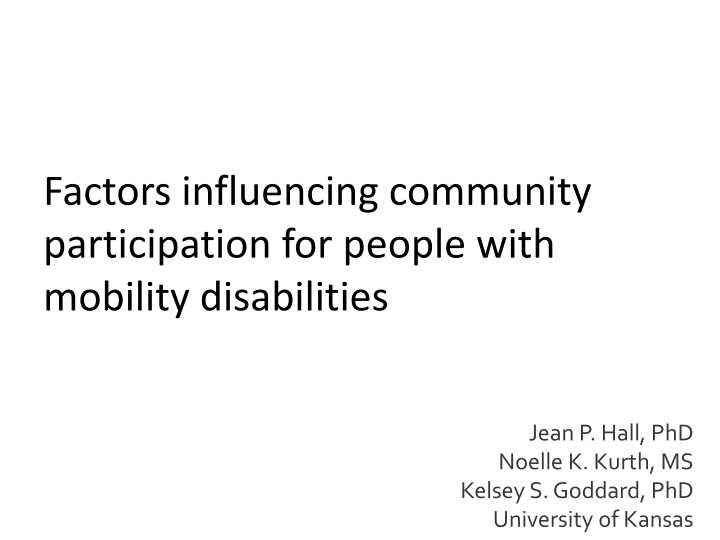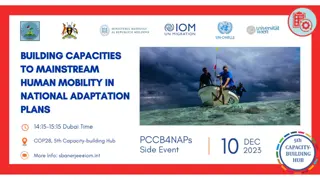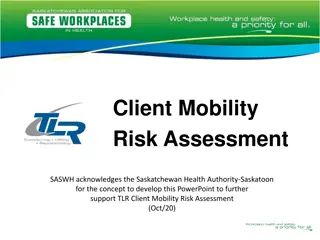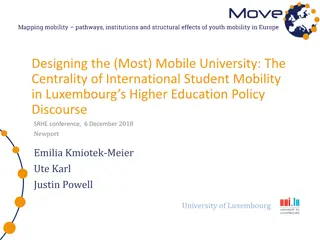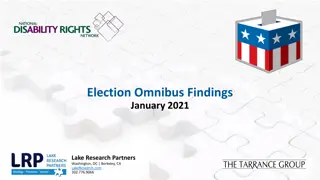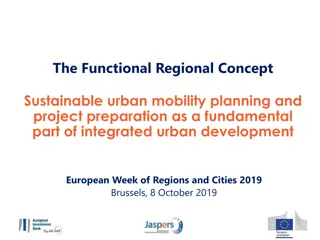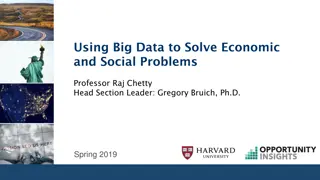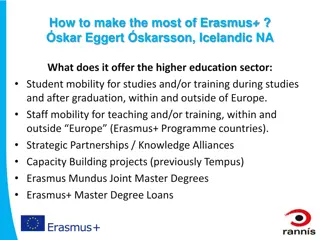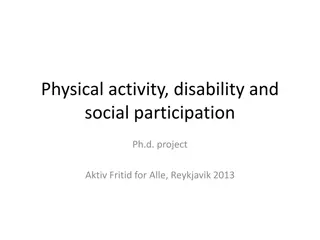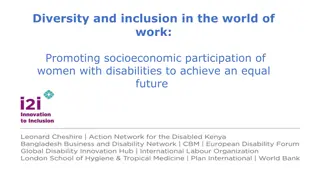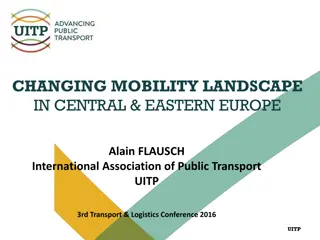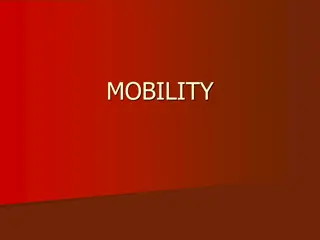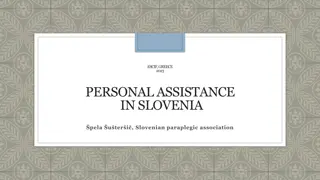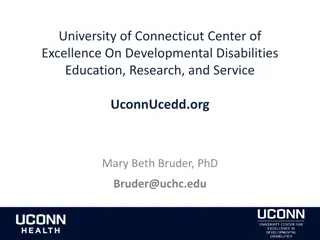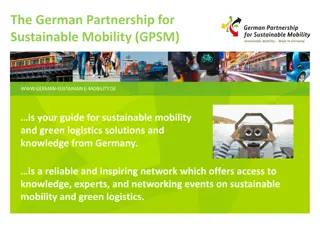Community Participation for People with Mobility Disabilities: Influential Factors
This study by Jean P. Hall, Noelle K. Kurth, and Kelsey S. Goddard from the University of Kansas delves into the factors impacting community participation among individuals with mobility disabilities. Understanding these factors can help improve inclusivity and accessibility.
Download Presentation

Please find below an Image/Link to download the presentation.
The content on the website is provided AS IS for your information and personal use only. It may not be sold, licensed, or shared on other websites without obtaining consent from the author.If you encounter any issues during the download, it is possible that the publisher has removed the file from their server.
You are allowed to download the files provided on this website for personal or commercial use, subject to the condition that they are used lawfully. All files are the property of their respective owners.
The content on the website is provided AS IS for your information and personal use only. It may not be sold, licensed, or shared on other websites without obtaining consent from the author.
E N D
Presentation Transcript
Factors influencing community participation for people with mobility disabilities Jean P. Hall, PhD Noelle K. Kurth, MS Kelsey S. Goddard, PhD University of Kansas
Importance Community participation and social connectedness are essential to overall health; improving participation and connectedness is thus a public health issue (e.g., Holt- Lundstad, 2020) People with physical disabilities encounter numerous barriers to participation/connectedness including inaccessible environments, health issues, transportation barriers and limited financial resources (Barclay et al, 2015, 2016) Understanding specific factors related to decreased participation/connectedness can inform interventions and supports
Methods Used primary data from the National Survey on Health & Disability (NSHD) to 1) better understand participation/connectedness for people with mobility disabilities compared to other disability groups and 2) identify specific factors related to levels of participation/connectedness for people with mobility disabilities Sample is working age adults with disabilities, ages 18- 64; n=2,156 Survey fielded Oct 2019 to Jan 2020 (pre-pandemic), Wave 2
Measures We focused on three measures: Social isolation: I feel that I am isolated from other people and my community, 1=not at all and 5=very much (PROMIS; https://www.promishealth.org/) Satisfaction with social activities: I am satisfied with my current level of social activity, 1=not at all and 5=very much (PROMIS) Loneliness Scale (Hughes et al., 2004): 1) How often do you feel you lack companionship?; 2) How often do you feel left out?; and 3) How often do you feel isolated from others? Total score 3 to 9
NSHD Wave 2 Participant Characteristics (Oct 2019 to Jan 2020) Physical/ mobility (n=621) 48.0 (13.8, 18-64) 52.5 30.2 57.6 8.4 19.2 18.3 44.7 35.9 41.2 22.7 Not physical/mobility (n=1535) 41.7 (11.6, 18-64) 51.4 36.9 57.3 7.4 20.4 8.9 54.1 34.4 41.7 19.5 p-value* Age, mean (SD, range) Female, % Race/ethnicity, % non-White Education, % with no college Marital status, % married Parent status, % w/ kids <19 Population density, % rural Employed, % Income level, % below FPL Reports fair or poor health, % Smokes/uses tobacco, % <.0001 .083 <.01 .901 .426 .535 <.0001 <.001 .718 .250 <.05 COMMUNITY PARTICIPATION/SOCIAL CONNECTEDNESS Never has reliable transport, % Not satisfied level social act., % Often feels isolated % Loneliness Scale mean (SD, range) 3.4 21.9 30.2 2.2 22.1 35.2 .099 .900 <.05 .301 6.1 (1.9, 3-9) 6.2 (2.0, 3-9) *chi-square or ANOVA
Results within the Mobility Group (n=621) Using logistic regression, we assessed significant factors associated with social activity and isolation. Social Activity: Being female (OR=2.129), young (18- 34; OR=2.507), and in fair or poor health (OR=2.311) resulted in greater odds of being dissatisfied with social activity, while being employed decreased those odds (OR=.197). Social Isolation: Living in a rural area (OR=1.943) or being in fair or poor health (OR=2.375) resulted in greater odds of feeling very much social isolation, while being employed decreased odds (OR=.339)
Results within the Mobility Group Using linear regression, we assessed factors significantly associated with loneliness. Loneliness Scale: Being younger, being in fair or poor health, and having income above the federal poverty level were significant predictors of greater loneliness. Being employed was a significant predictor of less loneliness. Finally, although the sample sizes were small, those who reported needing but not receiving paid personal assistance services (PAS, n = 55) were significantly more likely (p < .001) to report greater levels of loneliness and dissatisfaction with social activities compared to those who reported having paid PAS (n = 135).
Discussion Survey respondents with mobility disabilities were more likely to live in rural areas and were more likely to be white, older, unemployed, and smokers. Despite their greater rurality, respondents with mobility disabilities did not report less access to reliable transportation and they were less likely to report feeling socially isolated compared to those with other disabilities. Within the mobility group, employment status and health status were the two factors consistently associated with the three measures of participation/ social connectedness.
Discussion Within the mobility disability group, social isolation was greater for rural dwellers; we found that rural respondents disproportionately reported fair or poor health (56.1%, n = 114) compared to non-rural respondents with mobility disabilities (38.0%, n=508, p < .001). The finding that being female and being younger were significantly associated with being less satisfied with social activity is seen in other population studies. Similarly, younger individuals in the general population are more likely to report loneliness.
Implications Medical professionals and service providers should be made aware that people with mobility disabilities in fair/poor health or who are unemployed are especially likely to need support for community participation and connection activities. Our finding that those who reported needing but not receiving paid personal assistance services were more likely to report loneliness and less satisfaction with social activities underscores the importance of paid assistance for this population in terms of supporting improved physical and mental health. Our findings also suggest that interventions or programs to support social connectedness might need to vary by age and gender for people with mobility disabilities. Younger individuals, in particular, might benefit from programs to address loneliness, and females might need supports to facilitate social activities (e.g., respite care).
Contact Information Jean Hall, jhall@ku.edu Noelle Kurth, pixie@ku.edu Kelsey Goddard, kelsey.shinnick@ku.edu Hall, J. P., Kurth, N. K., & Goddard, K. S. (2021). Assessing factors associated with social connectedness in adults with mobility disabilities. Disability and Health Journal, 101206. For more information about the NSHD and how you can access the data to conduct your own analyses, please visit: https://ihdps.ku.edu/collaborative-health-reform-and-independent- living-chril The National Survey on Health and Disability (NSHD) is part of the Collaborative on Health Reform and Independent Living (CHRIL). CHRIL is funded by a 5-year Disability and Rehabilitation Research Program (DRRP) grant from the National Institute on Disability, Independent Living, and Rehabilitation Research (NIDILRR, #90DP0075-01 00). Presentation contents do not necessarily represent the policy of NIDILRR, ACL, or HHS and you should not assume endorsement by the federal government.
Regression Analyses of Social Isolation & Social Activity Among those with Mobility Disabilities (n=569) Odds Ratio ( ) 95% CI Lower 95% CI Upper p-value Not Satisfied with Level of Social Activity gender, female age group, 18-34 Population density, rural Education, college Employed Race/Ethnicity, non-white Income level, < 100% FPL Health status, fair/poor Feeling Very Much Social Isolation gender, female age group, 18-34 Population density, rural Education, college Employed Race/Ethnicity, non-white Income level, < 100% FPL Health status, fair/poor 2.129 2.507 .804 .961 .197 1.125 .692 2.311 .001 <.01 .457 .886 <.001 .627 .129 <.001 1.353 1.417 .452 .557 .117 .700 .430 1.498 3.351 4.436 1.429 1.659 .329 1.807 1.113 3.565 .615 1.405 1.943 1.333 .339 1.422 .962 2.375 .054 .288 .030 .359 <.001 .190 .276 <.001 .374 .751 1.065 .721 .197 .840 .898 1.459 1.009 2.628 3.545 2.464 .583 2.406 1.031 3.865
Regression Analysis, Loneliness Scale 95% CI Lower -.238 95% CI Upper .386 Loneliness Scale p-value Gender, female .019 .642 Age group, 18-34 .180 <.001 .538 1.373 Population density, rural -.016 .697 -.501 .335 Education, college .026 .544 -.260 .493 Employed -.235 <.001 -1.25 -.613 Race/Ethnicity, non-white .036 .386 -.198 .513 Income level, < 100% FPL -.145 <.001 -.033 -.010 Health status, fair/poor .198 <.001 .481 1.116
